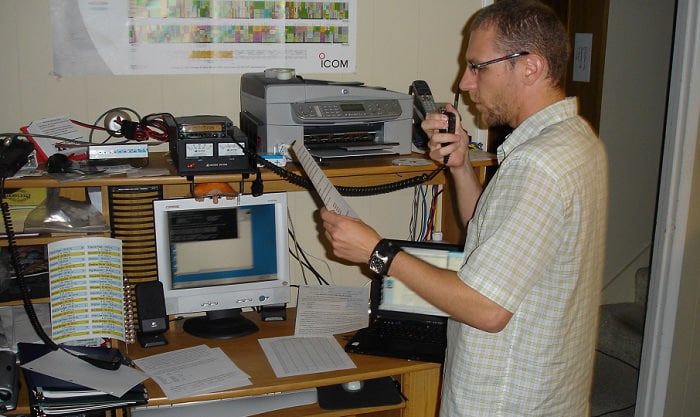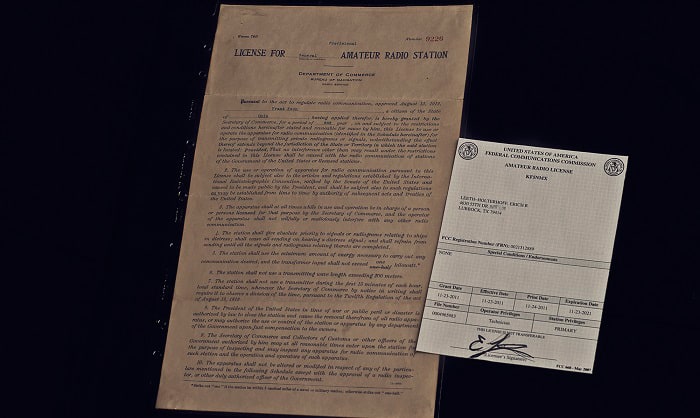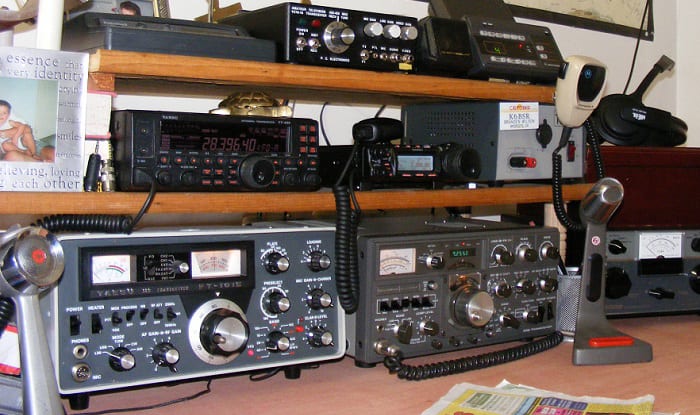A valid license is one of the major requirements when operating a ham radio. It is not only a legal obligation but obtaining an amateur radio license is also an opportunity to level up your knowledge and skills.
Getting a ham radio license is a straightforward process. First, choose the right license class. Next, review for the exam and take it. You can do so online and in-person. Wait for the results and download a copy of your license once it is available.
Read on to learn more about how to get your ham radio license:
Table of Contents
A Step-by-step Guide to Obtain Ham Radio License
The specific steps may vary depending on your location. In this guide, however, our focus is on how to do so if you are in the United States.
Step 1: Pick a License Type
The first thing that you will need to do is to choose the type of license that suits your needs. According to the Federal Communications Commission, there are three main types of ham operator’s license.
Technician
With a technician license, you can access all ultra-high and very high frequencies. This means that you can operate at frequencies above 50 MHz.
Additionally, this shortwave radio license will allow you to transmit Morse codes at selected bands under 30 Mhz.
If you are new to operating a ham radio, this is for you. It is considered an entry-level ham radio certification.
General
If you take and pass this test, most HF bands will be accessible to the operator. This can open doors for national and global radio communication.
Under this license classification, you will have expanded privileges.
It is possible to take the Technician and General test at the same time. However, for those who do not have a robust technical background, it is best to take one step at a time.
Amateur Extra
This is the highest license that you can obtain. It provides full access to all bands under the Amateur Radio Service.
Before taking the exam to have an Amateur Extra license, make sure that you are already confident of your knowledge in operating techniques and radio science.
Step 2: Study for the Test
Like any test, preparation is the key. Do not take the exam unprepared. It will be a waste of time and money.
The level of study will depend on the type of exam. For instance, in the Technician exam, most will dedicate at least ten hours of study.
Luckily, you can study online. You will find a lot of free online courses, although paid premium options are also available for a more comprehensive study.
If you are the kind of person who easily gets distracted online, there are also books and other printed materials you can use as a study guide.
Step 3: Take a Practice Exam
Before you proceed to the actual test that will grant ham radio operators license, we suggest that you take a practice exam. Many of them are available online.
Through this, you will have an assessment of your knowledge. It will gauge the feasibility of passing the exam. If you have a low score, take it as a sign that you are not yet ready.
Step 4: Take the Test
Once you are all set, it is time to proceed to the most important part. The coverage of the test will differ depending on the specific type of exam that you will be applying for.
- Technician: The test includes 35 test questions that cover areas like radio theory, operating practices, and existing regulations.
- General: You first need to pass the technician exam. To have the general license, you also need to pass a test with 35 questions.
- Amateur Extra: This exam requires a test with 50 questions taken from a pool with more than 600 questions.
There are multiple ways to take the exam. If you want the most convenient, then you can opt to take the FCC ham radio license test online.
Alternatively, if you do not like to get a ham radio license online, there are also options for in-person testing. You can do this in a Volunteer Examiner Coordinator with FCC approval.
There is no time limit for the exam. However, because it is only 35 to 50 questions, depending on the type of license, it won’t be too long.
Step 5: Wait for the Results
The waiting game begins. Your exam will be assessed. You will be waiting not just for the results but also your callsign.
If you are eager to know the result, you can also go to the FCC website. You can utilize the license lookup feature.
Through the lookup, you can search using your name or registration number. Otherwise, you will receive an email.
Step 6: Obtain Your License
It’s the moment of truth! If you pass the exam, wait for an email with further instructions on how you can finally get a copy of your ham radio license.
The easiest way to do this is to download a copy of the license online. You will have two copies. The first is a large one, which you can frame and the second is a smaller copy, which you can keep in your wallet.
Unlike a driver’s license, however, you do not need to always have a copy of the license with you during operation. It is available in the database, making it easy to verify when necessary.
Also, Remember to Renew Your License
Like most licenses, it is not valid for a lifetime. Renewal is one of the most important requirements for ham radio license, making sure that it remains valid during your practice.
Renew your license once every ten years. The specific rules and requirements can vary from one country to another. The FCC will send a reminder when you are due for a renewal.
The good news is that you do not need to take another test before you can renew your license. Plus, it is free!
Frequently Asked Questions
Why do I need a ham license?
The most important reason is because it is a legal requirement to operate and transmit. If you operate ham radios without the right license, then you can end up in trouble.
More so, getting a license is also an opportunity to improve your knowledge and hone your skills. You will be taking classes, so you will be familiar with the ins and outs of ham radios.
It can also be a good addition to your resume, especially if you are applying to a specific job that deals with operating ham radios. To know details, visit this post for more.
Who can be a ham operator?
Anyone can be a ham operator, but you need to have a valid license. You will need to pay a fee and pass a government-sanctioned test, which will demonstrate your knowledge in ham radios.
Can I use a ham radio without a license?
Yes, it is possible to use a ham radio even when you do not have a license. However, you will be limited to only listening. You are not allowed to transmit or talk.
Are ham radio licenses hard to get?
No, it is not hard to get a license to operate a ham radio. You do not need experience. But you will have to take classes, which will equip you with the right knowledge and skills.
How much is a ham radio license?
According to a new rule released by the Federal Communications Commission in April 2022, as mandated by the Congress, the cost of ham radio license is $35.
Meanwhile, the National Association for Amateur Radio is extending a one-time grant of $35 for applicants below 18 years old. The test, however, must be administered by an ARRL Volunteer Examiner Coordinator.
What happens when you use a ham radio without a license?
Operating a ham radio without a valid license will have repercussions. You can have civil or criminal penalties. To add, you can also be fined, or your equipment can be seized.
Conclusion
At this point, we hope that you are already aware of how to get your ham radio license. As stated above, it is easy!
Become a ham radio operator by applying for a license. It starts by choosing the right license class, reviewing, and taking the exam!
Even if you are a novice, you can pass the test! The entry-level exam only has 35 questions, which are easy if you prepare accordingly!

Hi, I am Amaro Frank – the Wind Up Radio’s content editor and writer. Working with Adam is so much fun, as his stories and experiences enrich my knowledge about radio communications and radio accessories. My main tasks in Wind Up Radio are building content and generating great articles on different topics around radio accessories.




